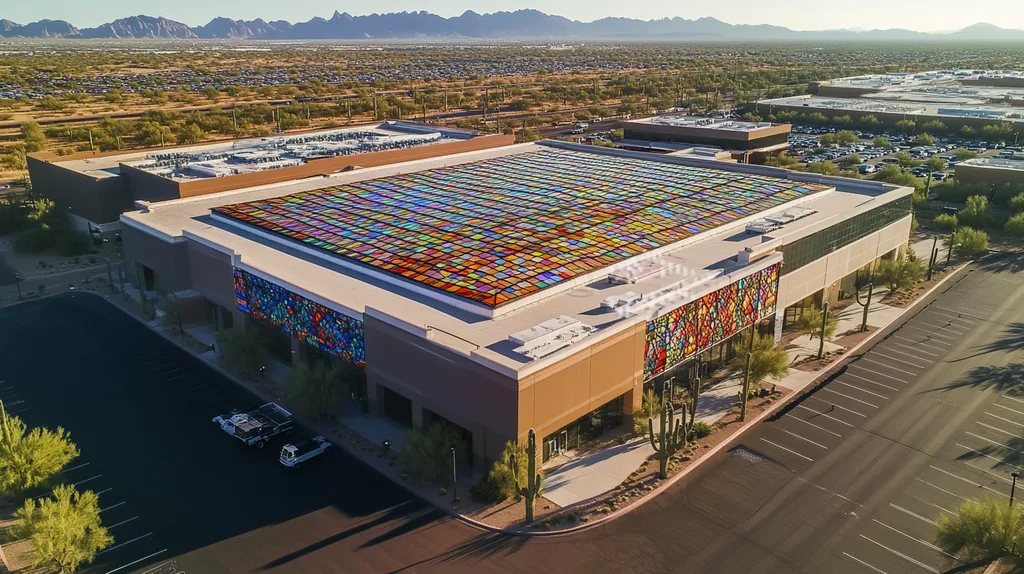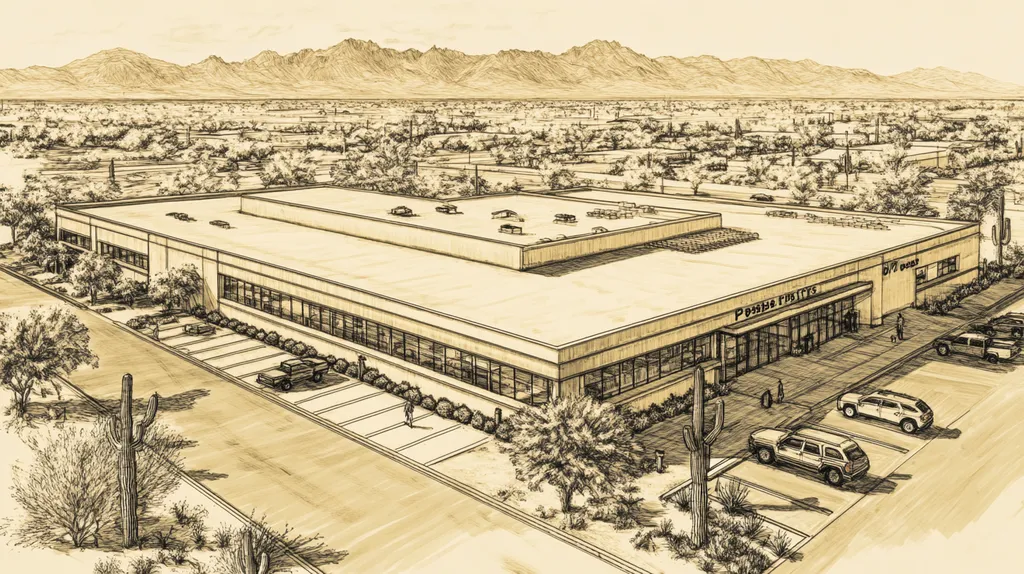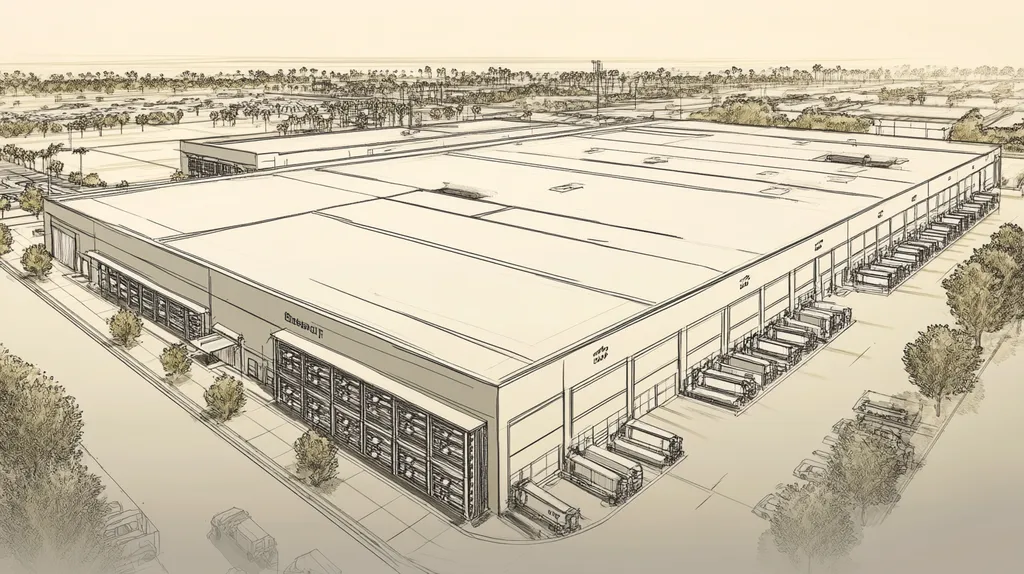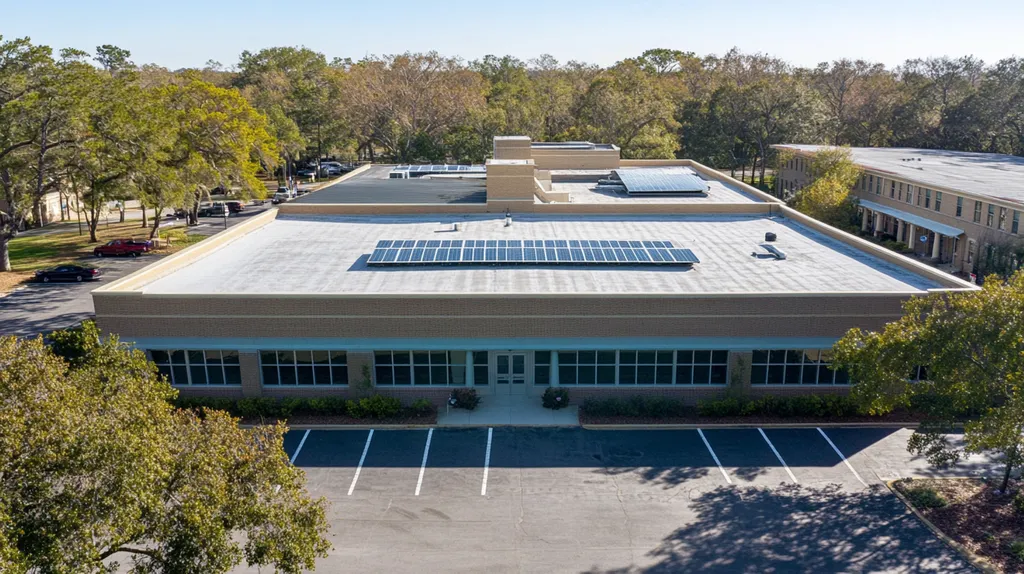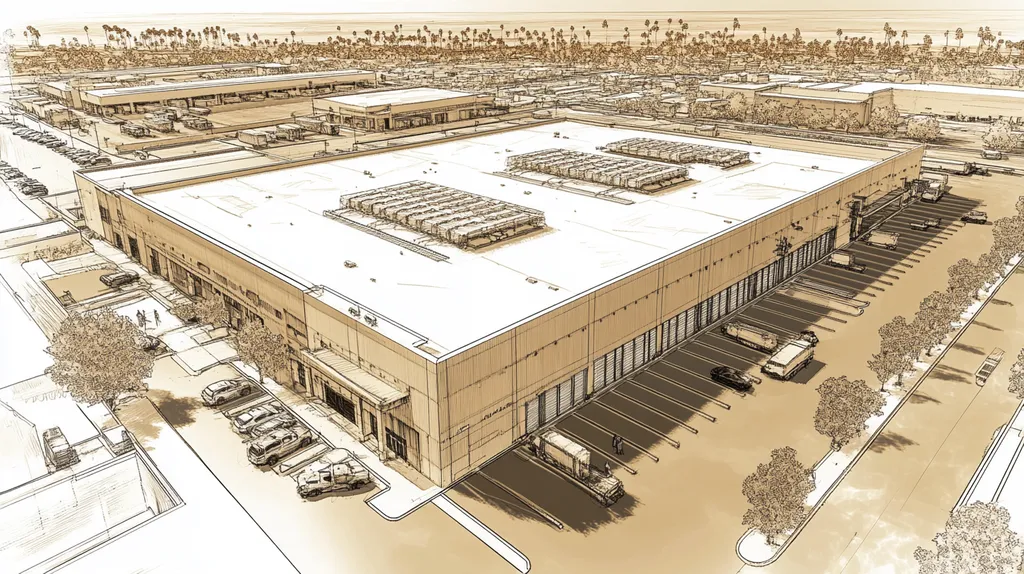Improper roof drainage threatens billions in commercial property assets each year, with industry data showing that 90% of roof failures stem from water-related issues.
Despite advances in roofing technology, persistent myths about drainage continue to mislead facility managers, leading to premature system failures and astronomical repair costs.
From misconceptions about flat roof design to overlooking early warning signs, these drainage myths pose serious risks to building integrity, energy efficiency, and long-term property values.
This comprehensive analysis exposes common drainage fallacies while providing evidence-based solutions that protect commercial investments and optimize roof performance.
SECTION 1: COMMON MISCONCEPTIONS
Effective roof drainage is vital for the longevity and safety of commercial and industrial buildings. Misinterpreting basic roofing concepts can lead to significant performance problems and costly repairs. A staggering statistic reveals that 75% of flat roof failures are attributed to poor drainage management. Facility managers must be aware of these misconceptions to safeguard their properties and ensure that their roofs remain effective over time.
Flat Roofs Are Truly Flat
The term “flat roof” can be misleading; these roofs actually need a subtle slope to facilitate proper water drainage. A completely flat surface encourages water pooling, leading to leaks and structural damage over time. Typically, a slope of at least ¼ inch per foot is necessary to ensure effective drainage.
Standing water poses a dual threat: it jeopardizes the roof’s structural integrity and can foster mold and mildew growth, which can harm the building’s occupants. Recognizing the importance of a proper slope is thus essential for maintaining a healthy environment.
Facility managers might mistakenly think that flat roof designs offer low maintenance. However, failing to incorporate even a minimal slope can result in costly repairs and a shortened roof lifespan. Being aware of this misconception allows managers to adopt proactive strategies to avert drainage challenges.
Consulting with design professionals and conducting regular assessments can help ensure roofs comply with drainage standards. The aim is to create a resilient roofing system that effectively mitigates water damage risks.
No Leaks Mean No Problems
Property owners often believe that if their roof is leak-free, it is in good condition. However, hidden drainage issues can linger invisibly. Water trapped on the roof can cause structural damage long before leaks become apparent.
Sometimes, moisture infiltrates materials gradually, going unnoticed until significant deterioration occurs. This can lead to rot in wood structures, reduced insulation performance, and weakened roofing materials—all potential disasters waiting to happen.
To combat these challenges, routine inspections should include evaluations of drainage systems, regardless of visible leaks. Early identification of potential drainage problems can save significant money and prevent extensive damage. Facility managers must recognize that sustained performance requires diligence.
Failing to address these issues can lead to rapid deterioration and costly replacements. Ultimately, comprehensive assessments are essential for maintaining a high-performing roof, rather than relying solely on visual checks for leaks.
All Roofing Materials Are Equal
Assuming that all roofing materials perform equally can be harmful for facility managers. In reality, various materials react differently to water management and drainage needs. For example, single-ply membranes and built-up roofs have distinct characteristics affecting their performance under similar conditions.
Some materials are more susceptible to damage from prolonged moisture exposure, while others are engineered for durability and efficient drainage. Overlooking these differences can lead to poor material choices that don’t fit the roof’s specific demands.
Selecting roofing materials without considering their drainage capabilities can result in expensive performance challenges. Facility managers should research material properties and consult experts in the field to ensure their selections meet drainage requirements effectively.
Understanding material performance is crucial for making informed decisions. Choosing the right roofing material can substantially enhance a roof’s lifespan and its ability to manage water efficiently.
SECTION 2: PRACTICAL IMPLICATIONS
Ignoring proper roof drainage can lead to severe and costly consequences for commercial and industrial buildings. Statistics reveal that roofs suffering from inadequate drainage can deteriorate up to 50% faster than those that are correctly designed and maintained. This section delves into the urgent issues at hand: accelerated roof deterioration, increased leakage risks, and potential foundation damage.
Accelerated Roof Deterioration
When roofs fail to drain effectively, standing water accumulates, which accelerates premature deterioration. Roofing materials like EPDM and TPO, although designed for tough weather conditions, become compromised under prolonged moisture instances.
The added weight of trapped water places significant stress on roofs, leading to structural sagging over time. This stress can create cracks and tears, rapidly compounding the damage.
For instance, a commercial roof with an anticipated lifespan of 20 years may only survive 10 years if drainage concerns are ignored.
To minimize this risk, routine inspections and maintenance are critical for identifying and resolving drainage issues. Neglecting these essential practices can result in significant financial losses.
Increased Risk of Leaks and Water Intrusion
Flawed drainage systems substantially raise the chances of leaks and water intrusion, jeopardizing the building’s integrity and its contents. Water pooling on roofs increases the likelihood of penetrating existing seams and flashing, leading to leaks.
Additionally, moisture seeping through roofs can damage insulation and foster mold growth, posing health risks to occupants. This threat is particularly acute in facilities storing sensitive materials, such as warehouses.
Moreover, the financial ramifications of water damage can escalate quickly, straining budgets for facility managers. Regular testing and maintenance of drainage systems are vital to mitigating these risks.
Timely action on potential leaks can protect property owners from expensive repairs and safeguard their valuable assets.
Foundation and Structural Damage
Improper roof drainage issues extend beyond the roof itself and can have grave repercussions on a building’s foundation and structure. Water accumulation can infiltrate down to the building’s foundation, undermining the essential support systems.
This infiltration can lead to significant structural problems, such as shifting or cracking foundations, requiring extensive repairs that could disrupt business operations.
For example, facilities with poorly drained roofs can face foundation repair costs exceeding $100,000. This startling statistic illustrates the pressing need for proactive measures.
Implementing effective drainage solutions and conducting regular roof inspections are essential steps in preserving the structural integrity of commercial properties while ensuring their long-term safety.
SECTION 3: COST OF MISINFORMATION
Misunderstanding how roof drainage impacts overall building health can incur hefty financial repercussions for facility managers. Inadequate drainage systems not only lead to costly repairs, like structural damage and unwanted water intrusion, but may also drain thousands of dollars annually from operational budgets. Without a clear understanding of these costs, facility managers risk undermining their financial stability while compromising their building’s integrity.
Financial Impact of Poor Drainage
The financial fallout from inadequate drainage systems is often underestimated. Uncontrolled water accumulation can accelerate roof deterioration, ultimately requiring premature replacements. The National Roofing Contractors Association highlights that maintenance issues such as leaks can set facility managers back over $1,000 each year in repair expenses alone.
Moreover, excessive water can trigger structural challenges, causing repair bills to rise into the tens of thousands of dollars. Facility managers may face unexpected costs that go beyond their renovation budgets if they neglect effective drainage practices.
As facilities age, drainage issues can snowball into more significant complications, increasing long-term financial obligations. Ignoring drainage systems not only precipitates immediate repairs but can also necessitate costly roof replacements sooner than anticipated.
In essence, the cumulative financial impact of neglecting proper drainage extends beyond repairs—it profoundly affects budget projections and financial planning for years to come.
Energy Efficiency and Increased Costs
Poor roof drainage can also take a toll on energy efficiency, driving operational costs skyward. When water pools on flat roofs, it disrupts the insulation’s effectiveness, forcing HVAC systems into overdrive. This additional strain can inflate energy bills by 30% or more each year.
Moreover, temperature fluctuations caused by stagnant water can lead to degradation of roofing materials, further hampering energy performance. Facility managers may not immediately recognize the link between drainage problems and escalating energy costs.
Additionally, adherence to Green Building Standards highlights proper drainage as essential for energy-efficient designs. By overlooking drainage components, facility managers risk losing opportunities for energy rebates or certifications that could significantly lower operating expenses.
Ultimately, neglecting the connection between roof drainage and energy efficiency can lead to painful financial consequences that hit budgets harder over time.
Decreased Property Value
Ignoring effective roof drainage can significantly diminish a property’s market value. Potential buyers are often hesitant about properties with known roofing problems or histories of water damage. Consequently, facilities plagued by drainage issues may linger on the market longer, discouraging interested buyers and leading to lower offers.
Experts suggest that a poorly maintained roof can reduce property value by as much as 15%. This depreciation results in severe financial losses for owners, especially anyone looking to sell or lease their properties.
Additionally, properties that do not meet current building codes for drainage might require costly renovations to attract buyers, further affecting their market appeal. These unforeseen expenses and the time needed for upgrades can significantly impact overall property valuation, compromising return on investment.
In conclusion, misconceptions about the efficacy of roof drainage directly correlate to decreased property values, resulting in long-lasting financial repercussions for facility managers and owners alike.
SECTION 4: REALITY CHECK
The stakes are high when it comes to roof drainage, as improper management can lead to severe performance issues, threatening both building integrity and financial resources. Over 30% of commercial roof failures stem from inadequate drainage solutions, impacting operations and incurring substantial repair costs. To safeguard investments, facility managers must prioritize regular inspections, proper installation, and customized roofing systems to address unique challenges.
Importance of Regular Inspections
Regular inspections are critical for catching drainage problems before they escalate into larger issues. A visual evaluation every six months can reveal trouble spots such as pooled water or debris that compromise roof performance. When inspections are neglected, minor problems can evolve into costly repairs requiring extensive work.
Scheduled maintenance also allows facility managers to address blockages caused by leaves, sediments, or other debris. Research indicates that timely intervention can extend a roofing system’s service life by up to 25%. Proactive inspections ensure compliance with building codes and create safer environments for building occupants.
Additionally, inspections yield valuable documentation that can support warranty claims. By making inspections a priority, facility managers dramatically reduce the risk of unexpected expenses related to drainage failures.
The repercussions of ignoring inspections can be severe, resulting in roof leaks, mold growth, and structural weaknesses. In the long run, routine inspections are a smart investment, paying off through avoided costs and enhanced peace of mind.
Role of Proper Installation and Maintenance
Proper installation is essential for achieving optimal roof performance, especially regarding drainage systems. An improperly installed system may lead to ponding water, which accelerates deterioration and shortens the roof’s lifespan. Ensuring all components are positioned correctly during installation can prevent unnecessary headaches down the road.
Ongoing maintenance is equally important, covering checks on seals, drains, and other elements that sustain functionality. Routine tasks such as clearing gutters and ensuring drain outlets remain unobstructed are vital for preventing water accumulation. Neglecting these responsibilities can quickly lead to costly repairs and hinder productivity.
Facility managers should seek out certified roofing professionals who understand the intricacies of machine installation and maintenance. Collaborating with knowledgeable contractors not only elevates installation quality but also guarantees ongoing support.
Disregarding the significance of installation and maintenance can have dire consequences, including premature roof failure and extensive structural damage. Investing in these critical areas safeguards both the building and its occupants from unnecessary risks.
Benefits of Customized Roofing Systems
Customized roofing systems are specifically designed to tackle the unique drainage challenges that individual buildings face. Unlike one-size-fits-all solutions, customized systems take into account specific environmental factors, building design, and local climate conditions, enhancing water runoff efficiency.
When investing in a tailored system, facility managers can substantially improve roof performance. Customized installations can significantly reduce water pooling and minimize stress on roofing materials, ultimately extending roof life and lowering repair costs. Additionally, many of these systems come with warranties that reflect their superior performance capabilities.
It’s advantageous for facility managers to partner with roofing professionals to assess their building’s specific needs and develop bespoke solutions. Customized systems not only optimize drainage but also enhance energy efficiency and insulation properties.
In sum, embracing customized roofing solutions is a strategic move toward sustainable and efficient facility management. Ignoring the need for tailored systems can lead to lost opportunities, increased costs, and heightened risks of drainage challenges, jeopardizing long-term investments.
SECTION 5: EVIDENCE-BASED ALTERNATIVES
The importance of effective roof drainage cannot be overstated. When drainage systems fail, the consequences can be dire—leaks, structural damage, and increased maintenance costs threaten the financial health of any facility. To combat these issues, facility managers must explore evidence-based alternatives. This section examines innovative solutions such as tapered insulation, cool roofing systems, and the strategic choice between targeted repairs and full replacements to optimize drainage performance and minimize risks.
Tapered Insulation and Drainage Mats
Tapered insulation is a game changer in the fight against drainage problems. By designing a subtle slope toward drainage points, it promotes better water flow and significantly reduces ponding. Facilities that install tapered insulation can expect to see notable long-term savings in both maintenance and repair expenses.
Moreover, drainage mats complement this insulation strategy effectively. These mats create a convenient pathway for water to exit while enhancing insulation. When used in tandem, tapered insulation and drainage mats form a robust system that not only boosts drainage capability but also enriches energy efficiency.
This innovative approach not only bolsters the structural integrity of buildings but also decreases energy consumption, protecting both budgets and the environment. For structures with unique architectural designs, tapered insulation can be customized to meet specific drainage demands, making it suitable for a variety of facilities.
Cool Roofing Systems and Energy Savings
Cool roofing systems represent a proactive approach to enhancing both drainage and energy efficiency. By reflecting more sunlight and absorbing less heat, these roofing materials mitigate high temperatures, which can otherwise worsen moisture-related issues. This technology helps break the cycle of heat and moisture that leads to costly repairs.
Additionally, implementing a cool roofing system can yield impressive energy savings. A cooler roof means less reliance on air conditioning, resulting in lower utility costs—particularly advantageous in regions with high cooling demands.
Many cool roofing products are engineered with enhanced drainage capabilities, thus further decreasing the risk of water pooling. By investing in these roofs, facilities are not only improving their drainage conditions but also working towards sustainability and compliance with growing energy efficiency mandates.
In a marketplace increasingly focused on green building practices, cool roofing can enhance a property’s appeal and competitive edge, aligning with local regulations designed to promote environmental stewardship.
Targeted Repairs vs. Full Replacements
When faced with drainage issues, facility managers often debate whether to opt for targeted repairs or a comprehensive roof replacement. Targeted repairs can be a more cost-effective initial remedy, focusing on specific problem areas. However, if underlying causes are not addressed, these repairs may pave the way for future complications, leading to increased costs in the long run.
On the other hand, choosing a full roof replacement may feel daunting, yet it presents an opportunity for a fresh start. A new roof can eradicate existing problems and introduce modern materials that provide superior drainage performance. Balancing immediate financial constraints with long-term benefits is essential in making this decision.
Consulting roofing experts for thorough assessments can help quantify the potential savings and performance improvements associated with each option. Comprehensive evaluations support informed decision-making and can ultimately guide managers toward the most effective solution while averting recurring drainage issues.
In the end, a thoughtful strategy that considers both targeted repairs and the possibility of full replacements will ensure the highest level of drainage performance. Such strategic planning plays a crucial role in guarding against future complications and the accompanying costs.
SECTION 6: TEST AND VERIFY
Ensuring effective roof drainage is crucial for preserving the durability of commercial and industrial roofing systems. Failing to conduct regular tests and verifications of drainage components can result in severe damage, including structural collapse and costly repairs. Alarmingly, over 50% of roof failure reports cite inadequate drainage systems as a critical issue. Prioritizing the evaluation and maintenance of these components is essential to prevent financial strain and maintain optimal roof performance.
Cleaning and Replacing Roof Drains
Regular maintenance of roof drains is essential for achieving effective drainage. This crucial procedure involves clearing debris and ensuring drainage channels remain unobstructed. Experience shows that even minor blockages can lead to significant ponding, facilitating leaks and degrading materials.
Property managers should establish a maintenance schedule for inspections and cleaning—ideally biannually or more frequently in lush environments. During these assessments, it’s critical to evaluate whether drain components require replacement due to wear. Taking timely action can prevent water from accumulating, protecting the structure and its occupants.
Employing high-pressure water jets is an effective method for clearing persistent clogs. Careful documentation of these maintenance activities serves as important proof of compliance and diligence. Additionally, clean drains not only enhance functionality but also improve the overall appearance and value of the property.
By committing to regular cleaning and replacing of roof drains, facility managers not only bolster drainage capabilities but also prolong the roof system’s overall lifespan. Ultimately, this investment in maintenance yields better performance and minimizes the risk of unexpected expenses.
Inspecting for Ponding and Water Flow
Ponding water poses a significant risk and should be a focal point for facility managers. It occurs when water collects in low areas on the roof, potentially leading to serious structural flaws. Routine inspections should specifically target problem zones and assess water flow across the roof’s surface.
Understanding patterns of ponding is vital to evaluating the effectiveness of current drainage solutions. These observations should be cross-referenced with rainfall data; extended wet conditions can exacerbate drainage challenges. Dismissing minor ponding as “normal” can result in premature roof failure.
Incorporating technology into assessments can bolster inspection accuracy. For example, infrared scans detect temperature variations indicative of trapped water beneath the membrane. Ensuring effective drainage means promptly addressing these issues to prevent extensive repairs.
Ultimately, regular inspections serve to safeguard investments in the roofing system. By meticulously documenting findings and making necessary corrections, property managers maintain a proactive stance toward roof care.
Validating Roof Warranties Through Maintenance
Many roof warranties require regular maintenance for coverage to remain valid. Property owners must recognize that failure to comply with these stipulations may void their protections under the warranty. Routine inspections not only bolster roof performance but are also crucial for preserving warranty integrity.
Keeping detailed records of cleaning, inspections, and repairs is essential for substantiating warranty claims. For instance, if a roof leaks during the warranty period but documentation is inadequate, the claim could be denied. Thus, facility managers should prioritize meticulous maintenance logs.
Collaborating with manufacturers can also help ensure that all maintenance activities are aligned with warranty requirements. Inviting independent experts for evaluations adds an additional layer of validation and reassurance. When disputes arise, having third-party endorsements enhances the strength of warranty claims.
By adopting a proactive maintenance strategy, facility managers can safeguard warranties, secure their investments, and promote long-term roof health.
Moving Forward
With over $5 billion in annual commercial property damage linked to improper roof drainage, facility managers can no longer afford to ignore this critical issue.
The evidence is clear: 90% of premature roof failures stem from inadequate drainage systems, yet many continue to operate under dangerous misconceptions about flat roof design and maintenance requirements.
By implementing proper drainage solutions, conducting regular inspections, and investing in modern materials like tapered insulation and cool roofing systems, facilities can extend roof life by up to 25% while dramatically reducing repair costs.
The future of commercial roofing depends on abandoning outdated myths and embracing evidence-based drainage practices that protect valuable assets and ensure long-term building performance.
The cost of inaction far exceeds the investment required for proper drainage management – the time to act is now.
FREQUENTLY ASKED QUESTIONS
Q. Are flat roofs truly flat in commercial roofs?
A. The term “flat roof” is misleading; these roofs need a subtle slope for proper drainage. A completely flat surface encourages water pooling, leading to leaks and structural damage. Implementing even a slight slope is essential for maintaining the longevity and performance of your roofing system.
Q. How does poor drainage affect the industrial roof lifespan?
A. Ineffective drainage can cause standing water, leading to accelerated deterioration of roofing materials. For instance, a roof expected to last 20 years may only survive 10 if drainage issues are ignored. Routine inspections are vital to prevent performance issues and safeguard your investment.
Q. What financial costs arise from poor drainage in commercial roofs?
A. The financial impact of inadequate drainage can be severe, with costs skyrocketing as repair needs grow. Maintenance issues such as leaks can easily exceed $1,000 annually just for repairs, while structural damage can escalate to tens of thousands. Proper drainage practices mitigate these risks significantly.
Q. Why are regular inspections crucial for an industrial roof?
A. Regular inspections catch drainage problems early, preventing them from escalating into costly repairs. These evaluations reveal areas needing maintenance, such as blocked drains or pooling water. By prioritizing inspections, facility managers can avoid unexpected expenses and extend the lifespan of their roofs.
Q. How do customized roofing systems improve drainage?
A. Customized roofing systems are designed to address specific drainage challenges unique to your building. Unlike standard solutions, they optimize water runoff efficiency, ensuring minimal pooling and enhanced drainage. Investing in tailored systems not only improves functionality but also extends the roof’s lifespan.
Q. What problems arise from ponding water on commercial roofs?
A. Ponding water poses significant risks, including structural damage and roof leaks. It indicates ineffective drainage and heightens the chance of material degradation. Routine inspections of drainage systems help identify ponding areas, allowing for timely interventions to protect your commercial roof.
Q. How can roof warranty validity be maintained?
A. Many roof warranties require regular maintenance to remain valid; neglecting this could void protections. Keeping detailed records of inspections and cleaning activities is crucial for warranty compliance. Proactively addressing maintenance helps ensure the longevity of your roof and secures your investment in commercial property.

